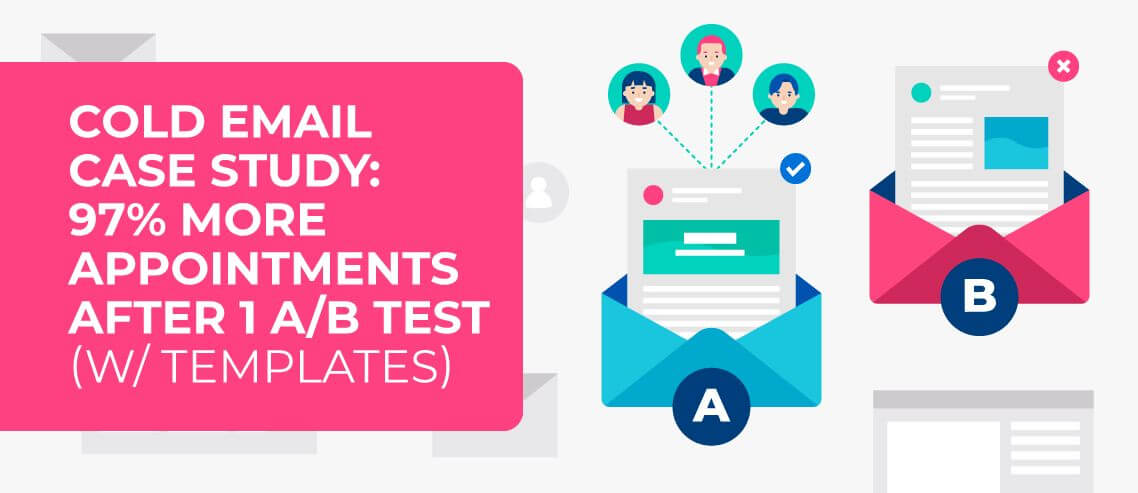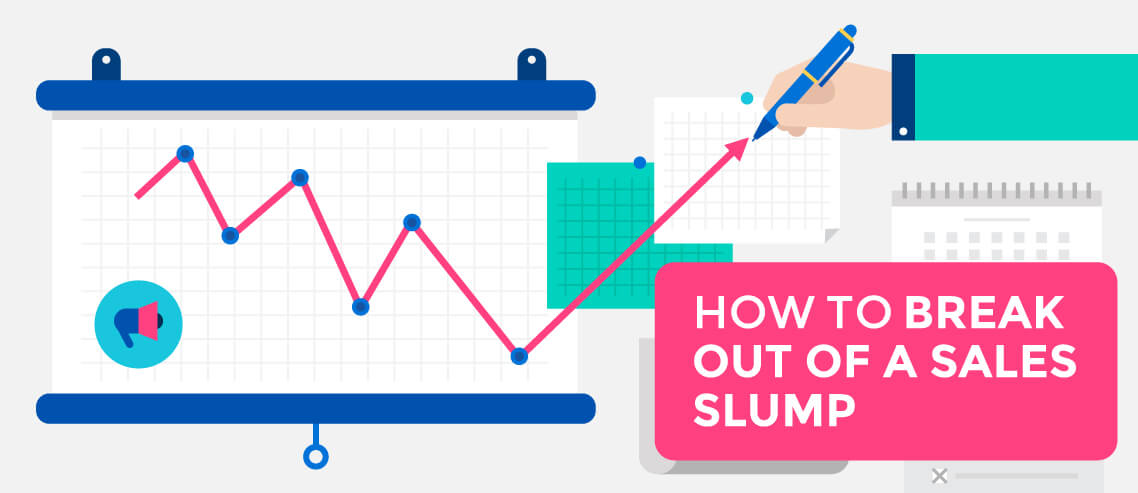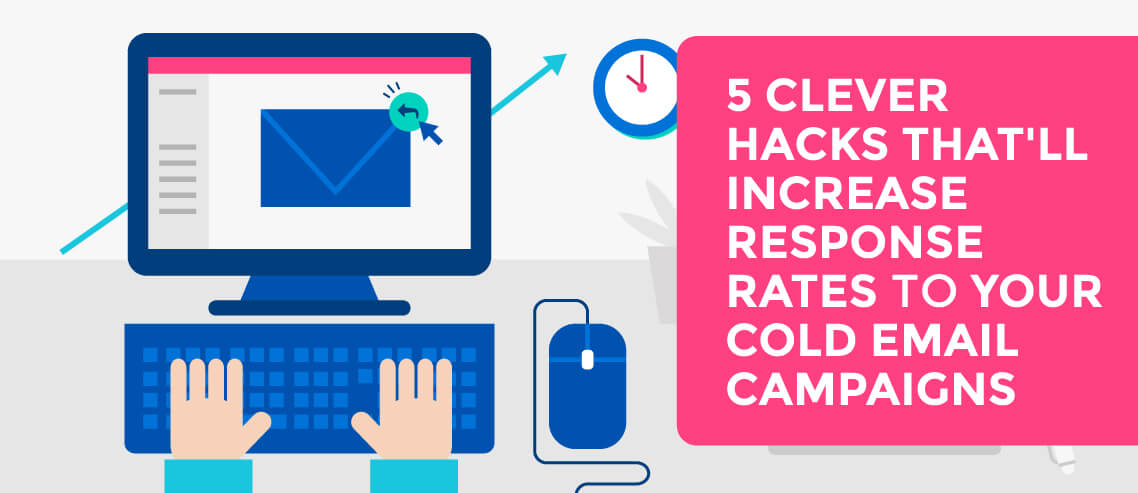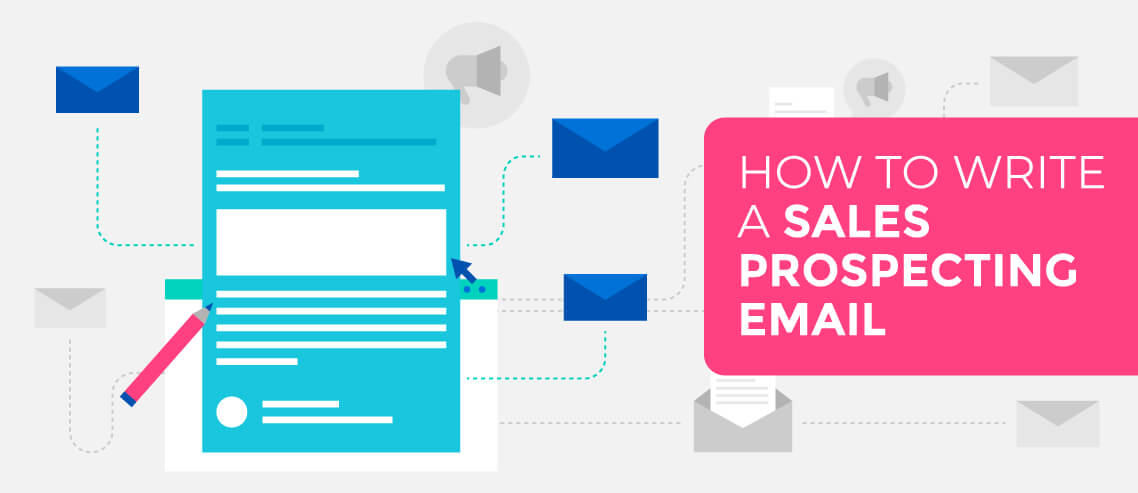Cold Email Case Study: 97% More Appointments After 1 A/B Test (w/ Templates)

Contents
This case study breaks down how we doubled the cold email results for a business broker (and longtime MailShake customer) after a single A/B test.
You’re going to see how we helped Robert Allen of Acme Advisors & Brokers turn a few “negative replies” into a campaign that landed multiple appointments per day thanks to a new A/B testing strategy.
Plus, I’ll show you why our lead generation agency started running “qualitative A/B tests” and how it’s helped us take a single email from a 9.8% to 18% reply rate after writing just one feedback-guided variation.
Campaign Stats:
4 emails
206 prospects
Open rate: 65%
30% reply rate
64 replies total
30+ meetings generated
The New Cold Email A/B Test
You’ve probably been told that you should A/B test your cold emails.
But after talking with data-scientists and marketing gurus like Brian Massey at Conversion Sciences…
…It turns out most of us (myself included) have been A/B testing cold emails wrong!
Gasp!
How To Run Cold Email A/B Tests Like a P.h.D
Here’s the biggest mistake cold emailers make when A/B testing:
“We look at reply rates instead of the actual replies.”
Yep, now, when I run A/B tests, I don’t care about reply rates. At least, not at first.
Why? According to data-scientists, reply rates are not a reliable metric until you get 100 replies per cold email variation. (Learn more on statistical significance here.)
[lyte id=”QtZwtXm8M6o” /]
Translation: If you end a test BEFORE you get 100 replies per variation, you won’t know (with confidence) which email performed better!
I’m no Ph.D, but that means if you get a 10% reply rate per variation, you’d need to send 2,000 emails before you can properly run an A/B test.
Do you see the problem here?
That kind of volume may work with landing page optimization or PPC ads… but if you have a VERY targeted list, you won’t have 2,000 people to contact per segment.
So what’s a sales team to do?
Run “Feedback Guided” A/B tests.
Turns out, analyzing your replies will help you improve results FAR more than checking reply rates.
This isn’t a new concept. (It’s just using qualitative data instead of quantitative data.) But it’s the best way to A/B test if you want to double your response rate quickly.
To explain how we did this — and how you can do the same – let’s look at the case study:
Case Study Overview
When we started working with Robert, he had a clear goal in mind: Generate 1 call per day.
Specifically, our goal was to bring them 1 scheduled call per day with a qualified business owner that was interested in having them sell their business.
To hit that goal, we’d need to generate 3 interested replies per day. (We could not assume that 100% of replies would actually show up to the call. So to be safe, 3 replies per day was our target.)
The “A” Cold Email
Reply Rate: 9.8%
Jack’s Notes: For this first variation, here were some of the targeting filters used:
Business Owners, in our target industry, with a company founded X years ago, in a city where my client had a buyer.
For this variation, we decided to be direct and ask them for a call regarding their business sale. And, of course making sure to add personalization following our CCQ framework.
Subject: numbers
{{firstname}}, {{CUSTOM INTRO SENTENCE — CCQ}}
Forgive me for being direct, but if I had a potential buyer in {{city}} interested in purchasing {{company}}, would you be open to hearing their offer?
If so, what does your calendar look like for a short call?
{{SIGNATURE}}
P.S. For background, my company helps entrepreneurs in the {{INDUSTRY}} space find the right buyer for their business when they’re finally ready to retire.
—-
Pretty good email, huh? That’s what I thought… Until the replies started coming in.
The “A” Cold Email Replies
That email got a 9.8% response rate.
Not terrible for a 1st start, but the replies were mostly negative… After analyzing the first 8 responses, 2 were positive (agreeing to a meeting) 3 were not interested. And 3 shared a common prospect reply pattern like this:



How We Wrote the “B” Variation: Addressing the #1 Problem
Do you sense a common theme in those replies?
Common Objection: They didn’t believe our client actually had a buyer in their city ready to make an offer.
So we created a test variation that could reduce the skepticism…
Takeaway: This was learned based on feedback! (Not reply rate.)
Fortunately, our client did have a buyer in those markets ready to purchase a business if it was a good fit.
So here’s what we did.
2 Changes That Doubled Our Reply Rate:
- We dropped the word “potential partner” from the copy. We learned this was causing skepticism, and our client HAD a partner ready to make an offer. So this word was a MAJOR problem area.
- We told them WHY we contacted them to make our pitch more believable.
- In the new copy, it mentioned that we were only targeting a certain kind of business that was at least X years old and had a strong reputation — based on their online reviews. So I included that (worded nicely of course) in the P.S. to let them know we specially targeted THEM.
Here’s what happened:
We went from a 9.8% response rate (mostly negative replies) to a 18% response rate with over 70% of replies marked as positive! #win
The “B” Cold Email Reply Rate: 18%
Subject: numbers
{{firstname}}, {{CUSTOM INTRO SENTENCE — CCQ}}
Forgive me for being direct, but I have a partner in {{city}} looking to acquire a company like {{company}}.
Are you open to talking numbers?
Best,
Robert
P.S. To be transparent, we’re looking for an {{INDUSTRY}} company in the area that’s been around for {{TIME PERIOD}} and has a strong reputation like yours. But if you’re not interested, you’re free to ignore this.
Results: Real Replies From This Variation



Conclusion
A few key takeaways for you:
- Yes, cold email still works 🙂 But you need to add personalization if you want to succeed. In fact, personalization works so well, we hired a full-time “Personalization Expert”. Test it and see what happens.
- Write your “B” variation after analyzing your negative replies. It’s the fastest, most reliable way to run successful A/B tests. (Reply rates are often misleading.)
- List building matters. This campaign would have flopped if we targeted a group that didn’t match our strict set of criteria. Analyze your current clients/customers and find common attributes you can use to build laser-focused lists.





